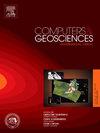TranSeis: A high precision multitask seismic waveform detector
IF 4.2
2区 地球科学
Q1 COMPUTER SCIENCE, INTERDISCIPLINARY APPLICATIONS
引用次数: 0
Abstract
This work introduces a highly efficient multitask parallel Artificial Intelligence model designed for weak seismic signal detection and phase picking, leveraging the capabilities of the conventional AI-powered Transformer architecture. By integrating a multi-part data extraction strategy, a multi-GPU parallel processing framework, and a multi-layer network schedule, we significantly enhance the accuracy of detecting P- and S-phases while optimizing the model's efficiency. The accuracy attained for the P and S phases was 92% and 76% when employing only a segment of the dataset. When we incorporated the entire dataset, the precision improved to 97% for P phases and 87% for S phases. Notably, our model demonstrates higher accuracy compared to existing deep-learning and traditional detection algorithms. When applied to extensive seismic phase observation data collected from 2020 to 2023 in mainland China, our model consistently demonstrated high accuracy, confirming its generalizability across various spatiotemporal contexts. It also exhibited exceptional sensitivity to subtle changes in waveform data, highlighting its promising potential for detecting smaller seismic events with even greater resolution in future applications.
TranSeis:高精度多任务地震波形检测器
这项工作引入了一种高效的多任务并行人工智能模型,旨在利用传统人工智能驱动的Transformer架构的功能,用于弱地震信号检测和相位选取。通过集成多部分数据提取策略、多gpu并行处理框架和多层网络调度,在优化模型效率的同时,显著提高了P相位和s相位的检测精度。当只使用数据集的一部分时,P和S阶段的准确性分别为92%和76%。当我们整合整个数据集时,P相的精度提高到97%,S相的精度提高到87%。值得注意的是,与现有的深度学习和传统检测算法相比,我们的模型显示出更高的准确性。将该模型应用于中国大陆2020 - 2023年的大量地震相位观测数据,结果表明该模型具有较高的精度,证实了其在不同时空背景下的普遍性。此外,它对波形数据的细微变化也表现出了卓越的敏感性,这凸显了它在未来应用中以更高分辨率检测较小地震事件的潜力。
本文章由计算机程序翻译,如有差异,请以英文原文为准。
求助全文
约1分钟内获得全文
求助全文
来源期刊

Computers & Geosciences
地学-地球科学综合
CiteScore
9.30
自引率
6.80%
发文量
164
审稿时长
3.4 months
期刊介绍:
Computers & Geosciences publishes high impact, original research at the interface between Computer Sciences and Geosciences. Publications should apply modern computer science paradigms, whether computational or informatics-based, to address problems in the geosciences.
 求助内容:
求助内容: 应助结果提醒方式:
应助结果提醒方式:


